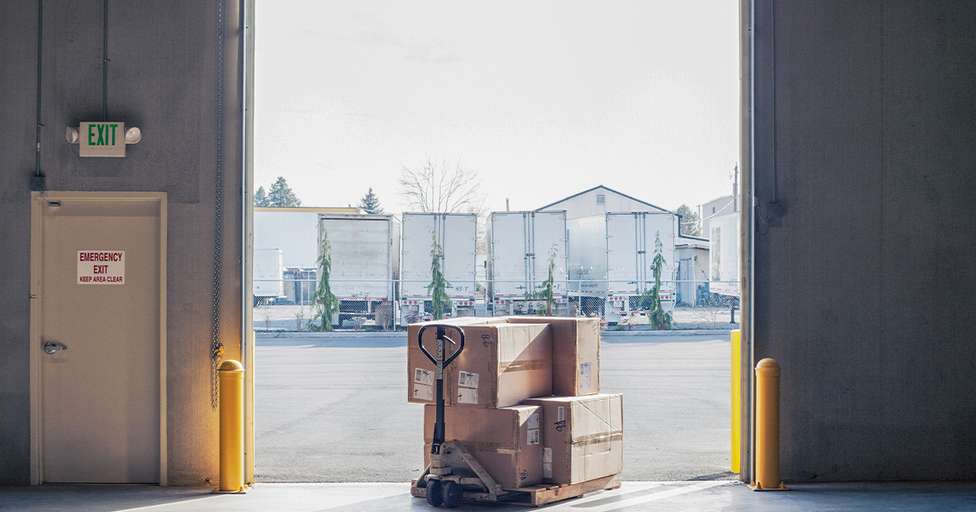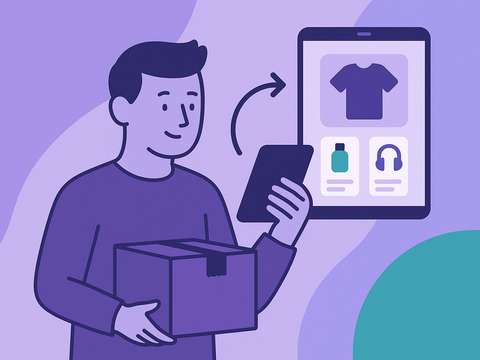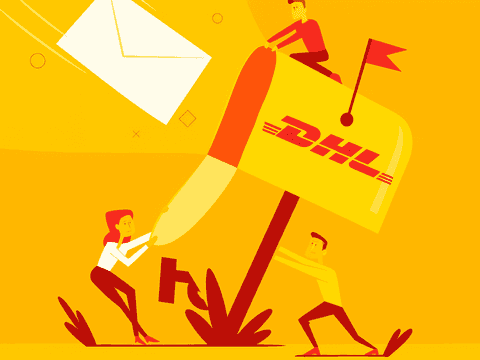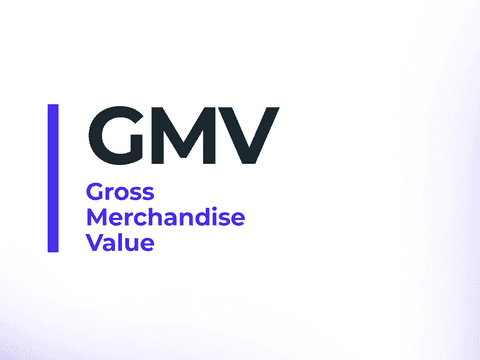If you’re looking for an external logistics provider, chances are you’ll encounter the terms 3PL, 4PL and 5PL. This article will focus on the most common logistics companies nowadays, which are third-party solutions.
3PL solutions are much more than software, they are a key element for the success of an online store in the long run. And who doesn't want to become the next Amazon or Zara of the online retail business?
Discover what they mean for a business, the different types of 3PL providers there are and see how they differ from other services like 4PLs and 5PLs.

What is a 3PL solution?
3PL stands for third-party logistics. The term is used to talk about outsourcing one or more activities included in the order fulfillment process. 3PL solutions will take over inventory management, warehousing, and fulfillment.
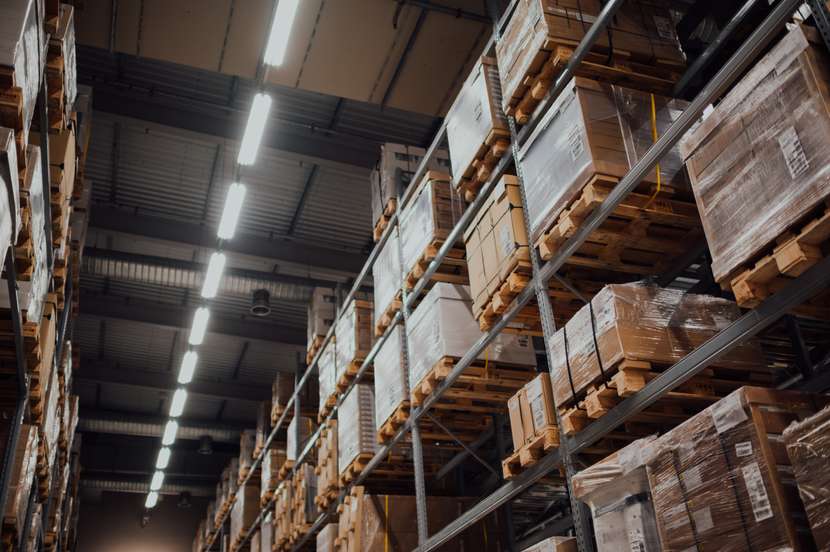
Generally speaking, a third-party logistic platform is used by an online store or any other business that needs to process a considerable number of orders to make their warehouse operations more efficient.
These solutions use advanced tools and infrastructure to help businesses fulfill more orders.
What are the four types of 3PL solutions?
1. Standard 3PL Provider
Standard 3PL providers can be used to pick and pack goods. Although quite simple in their functioning, their cost tends to be lower than custom-made solutions or other types of 3PL companies.
2. 3PL Service Developers
3PL service developers include more features than standard 3PL providers.
The issue of managing goods in facilities such as warehouses is easier with 3PL service developers. However, if you want to take full control of warehouse activities, you’ll need a 3PL customer adapter or a 3PL customer developer.
3. 3PL Customer Adapters
3PL customer adapters are capable of completely managing all the warehouses and logistics of a company. The online store can therefore outsource all of its logistic operations and focus on other tasks, like the production of goods, sales analysis and forecast, marketing strategies or customer support.
This solution is more expensive than the previous types of 3PLs, but it also provides more functionality. This has a clear impact on the time needed to process orders, which directly increases the profitability of the online store.
4. 3PL Customer Developers
3PL customer developers are the type of 3PL provider that covers the largest share of a company’s logistics.
3PL customer developers can seem like a costly solution, but their ability to integrate with other software systems makes them an ideal option for big online stores and companies with relatively complex systems.
They can monitor warehouses and logistics and provide regular and updated data to constantly improve business processes and performance.
Understand the difference between 3PL, 4PL and 5PL
3PLs
3PLs are companies focused on providing physical help with the fulfillment and handling of products and online orders. They count with technology, vehicles, tools and employees to process orders, pick and pack products and ship parcels, among other things related to logistics activities.
4PLs
While some 3PLs can also provide work as 4PL providers, 4PLs are typically understood as platforms that provide a software solution, rather than a service that physically processes orders for the online store.
4PLs may not have vehicles or storage facilities themselves, but they can function as a consultant on how to improve operations to increase productivity and profitability.
5PLs
5PL providers take care of all the elements of the supply chain of an organization, regardless of the number of facilities they work with and other specifications that may apply to wider supply networks.
5PLs plan, organize and implement logistics solutions, using technology to make an eCommerce business more efficient. The main difference between a 4PL and a 5PL is the scope of work they have, with 5PLs being a better fit for the largest eCommerce players.
This infographic shows the difference between these and other logistics agents.
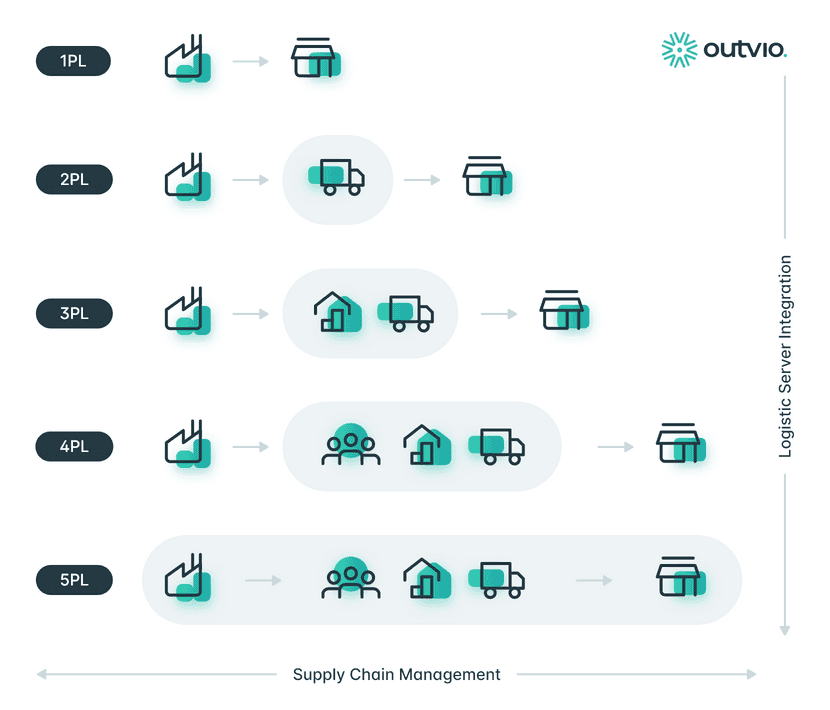
Purpose of 3PLs
3PLs help businesses in the following areas:
- Transportation of materials
- Inventory storage and management
- Picking and packing of products
- Classification and labelling
- Transportation of goods (Last-mile delivery)
- Management of exchanges and returns
Advantages and disadvantages
- Responsiveness: 3PLs speed up warehouse activities and promote and enable faster deliveries to customers
- Cost reduction: apart from not needing to invest in infrastructure and manpower, 3PLs can allow you to obtain better shipping conditions and rates, reducing the cost of logistics processes
- Optimization: relieving the workload related to logistics management allows eCommerce to focus on other areas of the business, such as marketing or sales
- Technology: 3PL operators include a series of technological improvements that help companies grow and reduce errors
- Scalability: third-party solutions can adapt to the different needs of eCommerce of different sizes, easing the process of managing orders as the volume increases
However, working with these kind of tools and providers also have its disadvantages:
- Implementation and maintenance cost: Third-party logistic providers come at a high cost, both in terms of implementation and maintenance
- Less control over the delivery: When you outsource the fulfillment process, the quality of deliveries is in the hands of the third-party solution. If customer satisfaction is important to you, it's vital to be in control of the delivery process to provide a premium service
- Less brand impact: The opportunities to impact your customer with branded communications, such as tracking and return notifications, are lost when you outsource your post-checkout tasks
How to choose a 3PL for your business
The integration of a third-party logistic system to simplify the logistical management of an eCommerce is an important decision that must be carefully considered. The main factors to consider are:
1. Price
Not all 3PL companies are equally adaptable. Depending on the number of warehouses that need to be managed, their location and the delivery addresses, there may be 3PLs that are unable to integrate with your operations.
2. Technology
This factor is closely linked to price. Normally, if they include more advanced technologies and features, the cost will be higher. However, if the needs of the online store require certain functionalities and it’s vital to choose a 3PL solution that can solve these needs.
3. Scalability
Any 3PL provider should be adaptable to the changing needs of online stores, like an increase in international sales or the implementation of new tools and processes.
4. Location of 3PL warehouses
3PL providers often have multiple warehouses in strategic locations. If you want to maximize the time and quality of your online store deliveries, you should choose a 3PL with a network of warehouses close to your customers' location. This will allow you, among other things, to negotiate cheaper shipping rates.
Which companies should implement a 3PL?
There are some factors that can trigger the implementation of a 3PL. For example, if you think that you have the resources needed to implement this solution to increase your business performance, using a 3PL solution could be a wise choice.
- If the order volume has dramatically increased and you can’t fulfill all the orders in a timely manner,
- if you are running out of inventory space,
- if you want to implement advanced technologies, without developing them yourself,
- if your warehouse activities (inventory, fulfillment, shipping) could be improved to prevent errors,
- or, if you want to focus on other sides of your business to accelerate your growth, implementing a 3PL solution, is worth considering
Software for logistics
There are many software companies for logistics that can be used by an online store. However, if you’re still not ready to let go of the control that comes with processing your orders in-house, Outvio is the perfect software solution for your business.
Outvio is the eCommerce infrastructure designed and created to give you control of all your post-checkout operations from order processing to shipping, tracking, customer service, returns and even remarketing strategies.
Use it to streamline your warehouse operations, like the picking and packing of products; automate the selection of courier and shipping methods with Outvio’s smart rules; get notified every time a shipping issue affects one parcel and customize your tracking and return portals to provide a better shopping experience that not only saves you time and money but converts one-time purchases into repeat customers with cross-selling strategies.
Sign up today and start using Outvio to take your post-checkout operations to the next level!
Conclusion
3PL platforms are the perfect tool for online stores focused on growth since, by outsourcing certain tasks, companies can invest their time in other parts of the business, such as customer service, marketing campaigns or product development.
Outvio can be fully integrated with your online store and your 3PL to give you full control over your warehouse and logistics operations. It can even take over some of the fundamentals of 3PLs, such as picking and packing.
Connect Outvio to your 3PL and CMS and optimize your logistics activities today!

